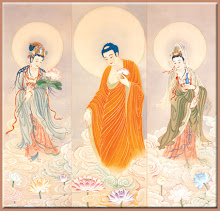Will return for you yourself to undergo.
Sutra on Cause and Effect Verse 130
According to the karma that is done,
That is the way the retribution is borne.
The doer is nonexistence .
All The Buddhas speak thus
Flower Adornment Sutra Verse 1o
Because of ignorance, living beings create karma. This term 'karma' actually means action or activity. This activity is based upon desire and is controlled by the law of cause and effect. For every good or bad action of the body, speech and of thought performed now, there will be a corresponding result which is experienced in the near future.
In every second of time, we are experiencing the results of our past body, speech and thought-karma and simultaneously create new karma which will bear fruit in the future. Hence, this karma is the main force that keep us in the cycle of rebirth, continually being reborn in the various realms of existence.
The Law of Karma explains why we undergo seemingly unexpected rewards and misfortunes. Everthing that happens to us, whether good or bad, has a reason or a cause, in the past.
Karma is actully a Sanskrit term that refers to that which is made by the activity of body,speech or mind. Now, what is the difference between cause and karma? Cause refers to a single incident, while karma is a long accumulation of causes.
Therefore, the conditions encountered by living beings differ. Some encounter great joy because they planted good seeds long ago, while others must undergo a great deal of hardship, always living in diffcult conditions because they have only sown bad causes.
In general, if you plant good seeds, you reap good fruits; if you plant bad seeds, you reap bad fruits.
Therefore, it is said that:-
To know the lives' causes,
Look at the rewards you are reaping today.
To find out about future lives,
You need but notice what you are doing right now.
Sutra on Cause and Effect Verse 32





